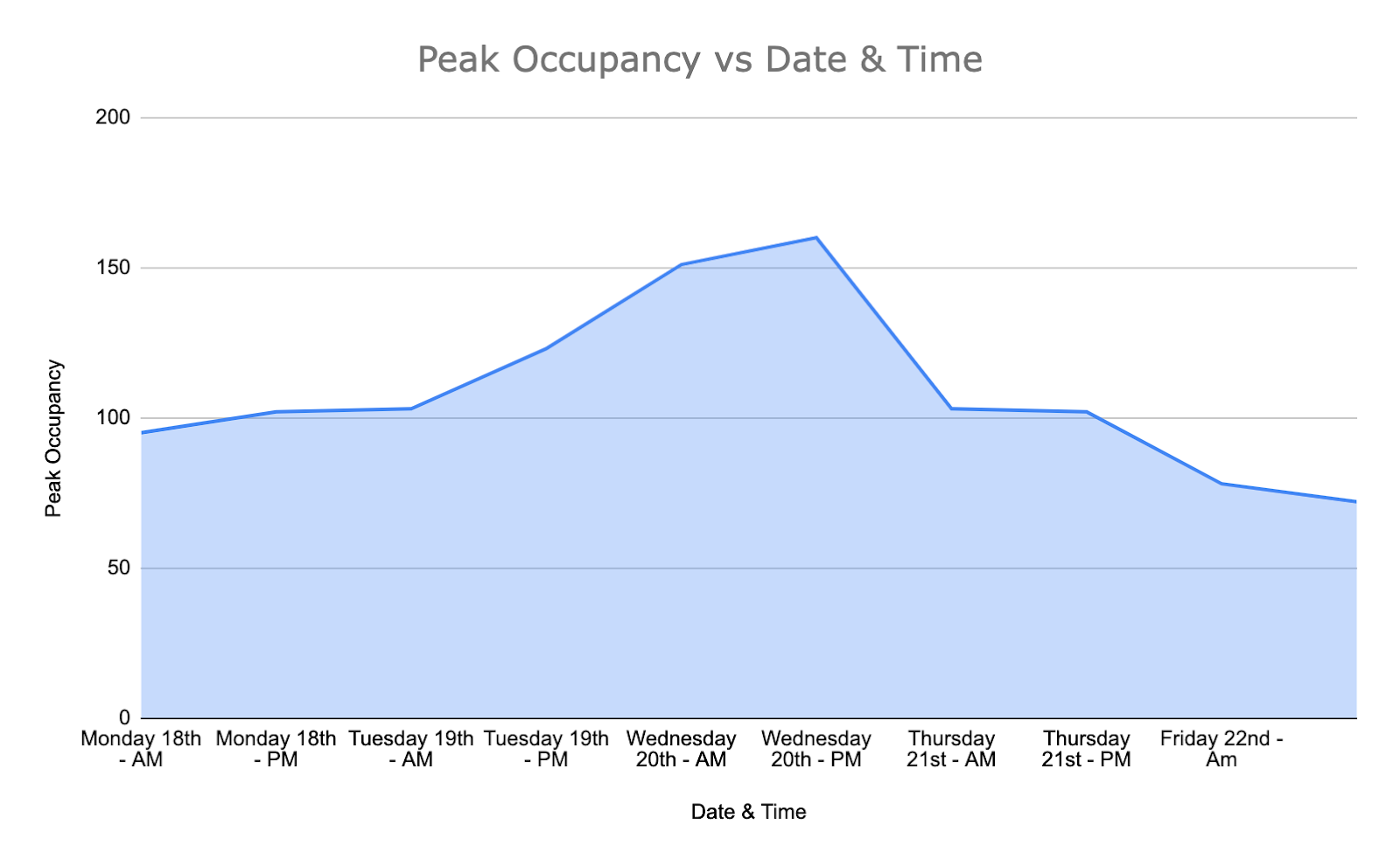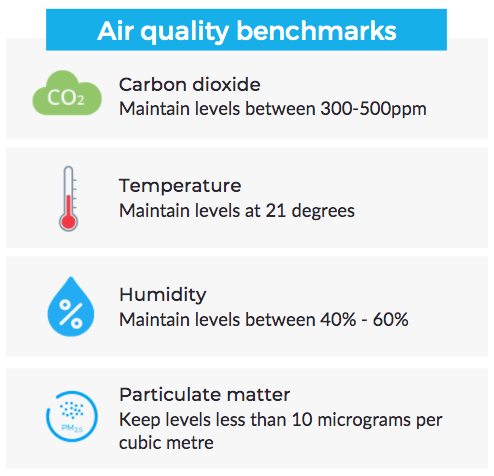Find out how occupancy levels can impact Indoor Air Quality (IAQ) and viral transmission, as well as the possible solutions available to minimise the risk of infection.
Indirect viral transmission
As an infected person respires they release contaminated aerosols into the air, which can then be inhaled by those around them and lead to further infection. Over time, contaminated aerosols build up within poorly ventilated areas increasing the risk of transmission.
Furthermore, occupancy levels within confined spaces must be considered. High occupancy levels mean that air is recycled between individuals more rapidly and aerosols build up at a faster rate, both leading to a greater risk of transmission.
Humans spend 90% of their time indoors, and recent findings indicate that 90% of viral transmission occurs indoors, therefore, it is the responsibility of organisations to take appropriate action to keep employees and visitors safe within their workplaces.
Mitigating risk
Respiration produces Carbon Dioxide (CO2) which is exhaled alongside aerosols. As such, CO2 sensors can be used to measure the build up of exhaled air within a space, enabling organisations to monitor and optimise HVAC performance to keep IAQ at a safe level.
The German Government has recently announced
€500m investment in improving the ventilation systems across their public buildings to combat the spread of COVID19, with Angela Merkel stating that increased ventilation is “one of the cheapest and most effective” ways of slowing viral spread.
Monitoring IAQ Levels 
To accurately measure the IAQ of indoor spaces, OpenSensors recommend deploying environmental sensors that monitor CO2, temperature and humidity.
To get the most accurate results, CO2 sensors should be wall-mounted at a height of 4ft, i.e. head height when sitting.
Priority zones to monitor include:
-
Areas of condensed workstations for individual work where occupancy is likely to be high
-
Frequently used meeting rooms with no or permanently closed windows
-
Communal and collaborative spaces where various teams are able to mix
IAQ Guidelines
- CO2 Levels: 700-800ppm
- Minimum ventilation rate: 4-6 air changes per hour (ACH)
OpenSensors have CO2 sensors deployed in many sites across North America and the UK, with clients covering a variety of sectors and industries.
When surveyed, 50% of 1000+ respondents to
OpenSensors’ Workplace Change Survey stated that monitoring IAQ and improving HVAC operations has the greatest impact on employee health and safety.
Yet most organisations fail to meet the above recommendations. OpenSensors sees average CO2 levels of 1000ppm and peak levels rising to nearly 2000ppm.
Clearly CO2 levels and IAQ need active management as a central component of building management moving forwards as office occupancy increases.
Optimising air changes per hour
Monitoring CO2 levels enables organisations to identify and react to dangerous spikes in IAQ, but in order to take preventative action the factors which lead to aerosol and CO2 levels spiking must be monitored, accounted for and where possible, controlled.
Maintaining CO2 levels of 700-800ppm requires bringing fresh air in to replace contaminated air prior to its inhalation, therefore, organisations need to ensure
ventilation systems are working at the correct rate of ACH.
The key factor to consider in this process is occupancy levels.
The importance of measuring occupancy
OpenSensors deployed environmental sensors on a client site, and the results (Graph: Peak CO2 Levels) were alarming.
Graph: Peak CO2 levels
Across the week, peak CO2 levels consistently exceeded and at times more than doubled the recommended upper limit of 800ppm.
From this data alone it is evident that not enough fresh air was being circulated throughout the office and ventilation systems needed to increase their ACH rate to maintain safe IAQ levels.
However, the client wanted to further understand the significant fluctuations in CO2 across the week.
As the variable factor, occupancy levels (Graph: Peak Occupancy vs Date & Time) from the same period were examined.

Graph: Peak occupancy vs Date & Time
A strong relationship between occupancy levels and CO2 levels was identified and must be accounted for when optimising HVAC systems.
In this instance, OpenSensors advised their client to present their building manager with data demonstrating the trends between occupancy and CO2 levels in order to optimise ventilation levels across the week.
This data will be used to ensure that ventilation systems are providing fresh air at the appropriate rate of changes per hour during periods of peak occupancy to keep CO2 levels between 300-500ppm.
Further environmental considerations
The lifetime of viruses in the air is also affected by environmental factors within our control, such as CO2, temperature and humidity. Here are benchmarks to maintain to minimise viral survivability:
Want to learn more?
Whether you need help with workplace analytics, consultation on your strategy or guidance on your workplace plans, we're here to help. Call us on +44 (0)20 3868 4376 or



